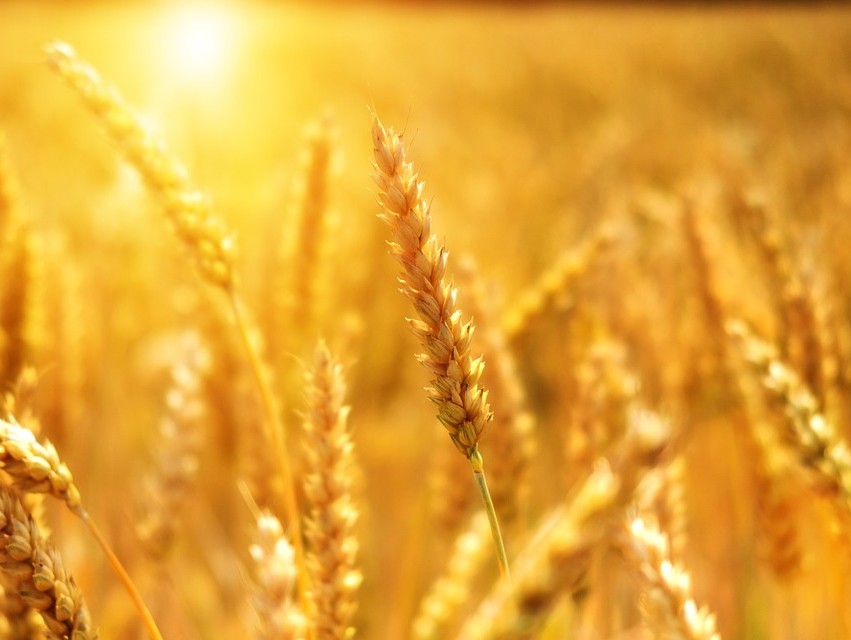
The grain markets have had a turbulent first half of the year. Many grain prices have shown greater volatility throughout the year. The trade conflict and weather conditions had a particularly strong impact on grain prices. Due to a shortage of soybeans, the price will rise in 2019/20. Less favourable harvest conditions in corn lead to lower availability. Wheat stocks peak in 2019/20 with stronger growth in demand.
The difference between the height and the lowest price in the corn market is so far 24%. For the wheat price this difference is 22% and for the soybean price 15%. What is striking is that the peaks and troughs in the prices of the three cereal markets are almost at the same time. The common denominator here is the trade dispute between the US and China. The progress of the consultations between the US and China is a major concern in these cereal markets. The result of the trade negotiations has a direct impact on the future demand for cereals. The sentiment about the progress of the trade negotiations alone has had a major impact on grain prices. Negative sentiment usually leads to falling grain prices (less demand), and vice versa.
But there is also unrest on the supply side, which causes price volatility. In addition to crop-threatening diseases (such as fungi) and insects (such as the invasion of the Army Worm in Asia), weather conditions are particularly influential. Conditions that are too wet or too dry so far in 2019 have proved to be less favourable for the crops. A lot of rain and flooding in the US had a negative effect. As a result, the plants were delayed. This is at the expense of quality. Farmers in Russia, Ukraine, the EU and Australia in turn faced low rainfall and high temperatures. The drought was at the expense of production. Favourable and less favourable weather have so much influence on output. The US Department of Agriculture (USDA) has already had to adjust its production forecasts more than once this year.
On the basis of these trends, investors make a translation into the future supply and demand situation on the grain markets. It often causes a lot of volatility in grain prices in the short term. In the event of a negative mood, they expand their 'short' positions and expect grain prices to fall. As soon as they take 'long' positions, sentiment is more favourable and they expect grain prices to rise. Investors are now biting into news of heat in the US, the good wheat harvest in Germany and soy sales in Russia to China.
In the short term, the trade dispute continues to affect prices. Uncertainty about Chinese soybean demand remains high. Due to African swine fever, pig farmers in China buy fewer soybeans worldwide. This primarily affects exports from Latin America. According to the International Grains Counsil (IGC), global demand for soybeans will grow by a total of 2% in the coming season. However, total production will shrink by almost 4%. As a result, stocks fall to 13% of total consumption, i.e. 6-7 weeks of available consumption. In this scenario, the price of soybeans is able to recover in the 2019/20 season.
According to the IGC, global production and demand for corn will decline in 2019/20. As production is declining faster than demand, the corn market will continue to face a shortage next season. As a result, stocks will continue to decline. These will fall from a level of 28% of consumption to 24%. This is approximately 12 weeks of consumption. Due to the extremely wet past few months in the US, plantations have slowed down considerably. This has a lot of influence on the quality and the final quantity of corn.
The USDA indicates that by mid-July 58% of the corn harvest is in good to excellent condition. A year ago this was 72%. This uncertainty about the harvest in the US will determine the price volatility in the coming months. This also increases the chance that the market will have to deal with a shortage next season. On balance, this will have a price boosting effect and ABN AMRO expects higher prices at maϊsprijs in 2019/20.
In the current season 2018/19, total production will shrink by almost 4%, mainly due to the challenging weather conditions. Consumption remains stable. This means that the price of wheat can recover towards the end of 2019. However, the market situation will change in the 2019/20 season. The International Grains Council (IGC) expects production to grow by almost 5% in the new season. The production of wheat in the US is expected to decline. This is due to delays in the harvest due to wet weather and fewer plants. However, production is increasing strongly in Australia, Ukraine and Russia. The yields are increasing.
Global demand will eventually grow by just over 2%. Demand from the animal feed industry in particular is growing strongly. This ensures that the growth in demand since three seasons ago is again above the long-term average. On balance, stocks are rising and they are reaching a peak level. The available stocks in relation to the total consumption increase to 36.3%. This puts some pressure on the price. The stronger growth in demand is causing damping. ABN AMRO expects a stable price trend in 2020.
Source: © ABN AMRO